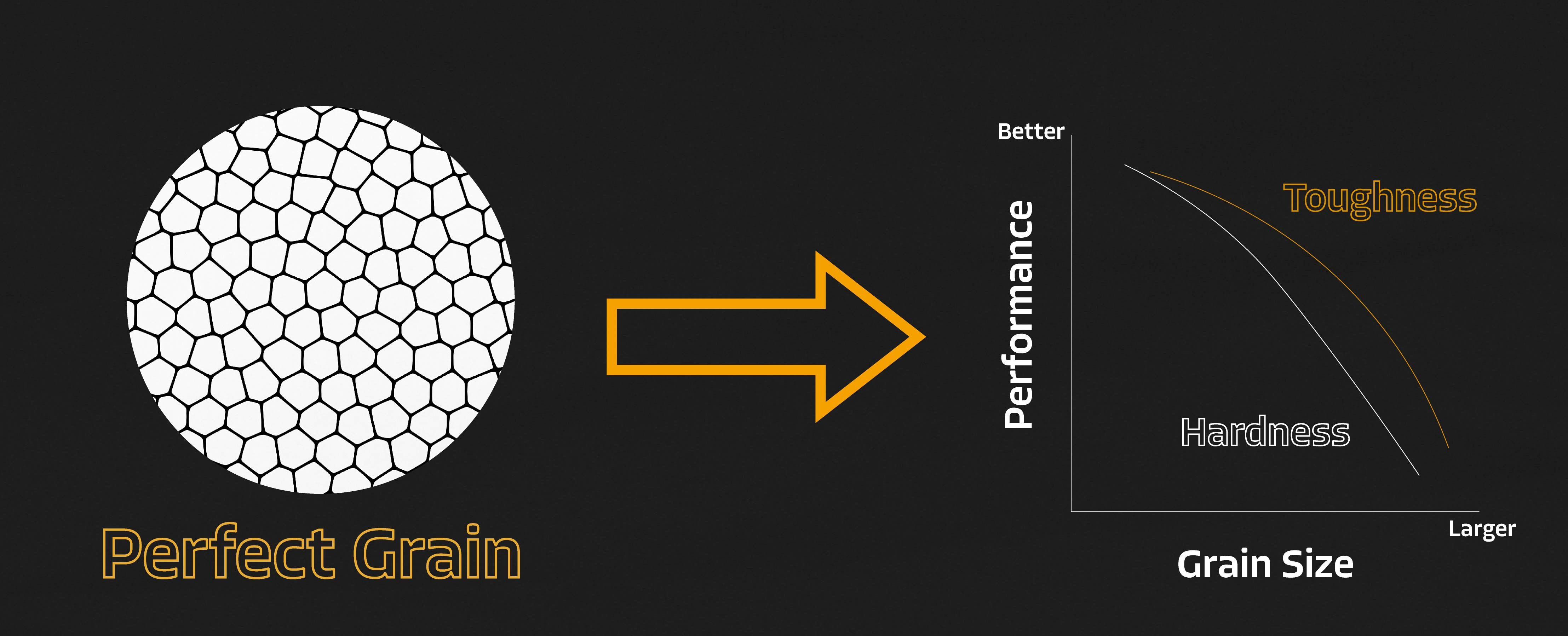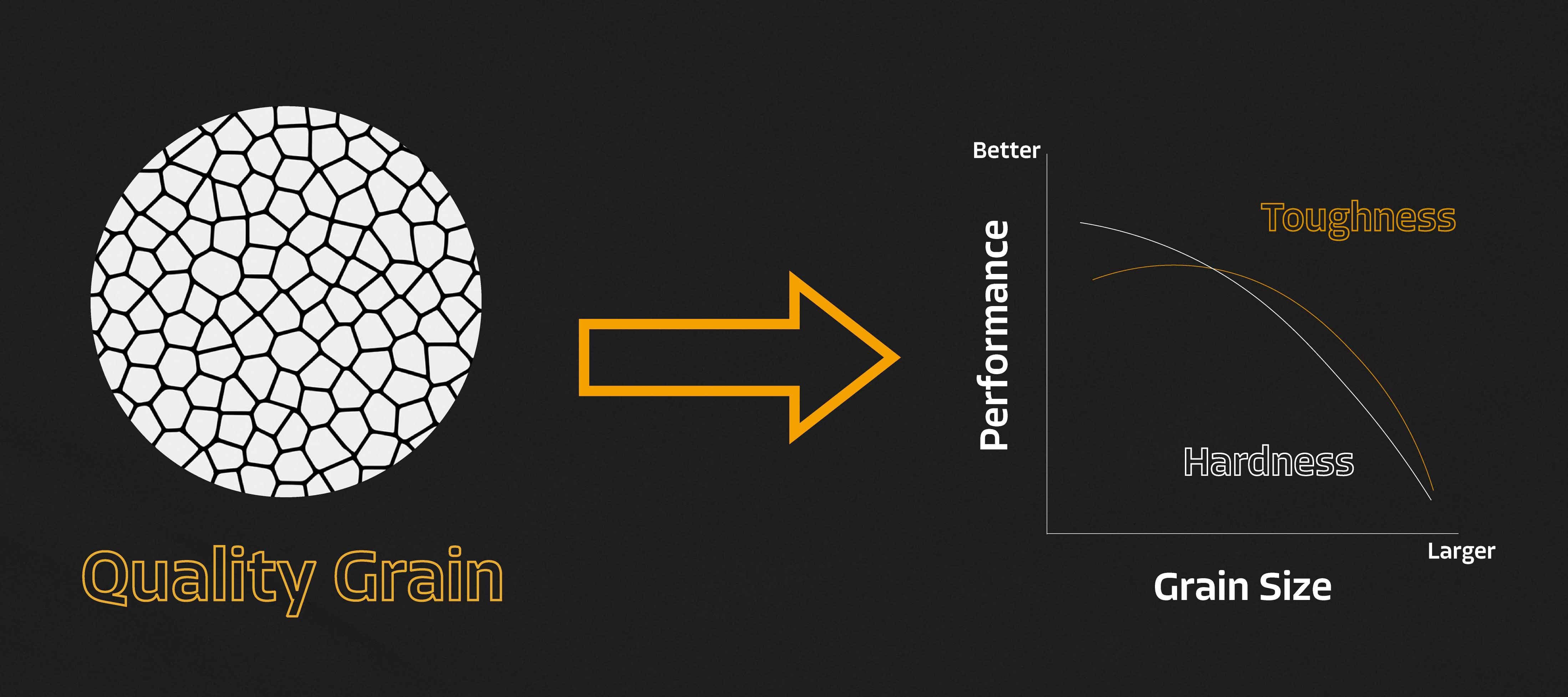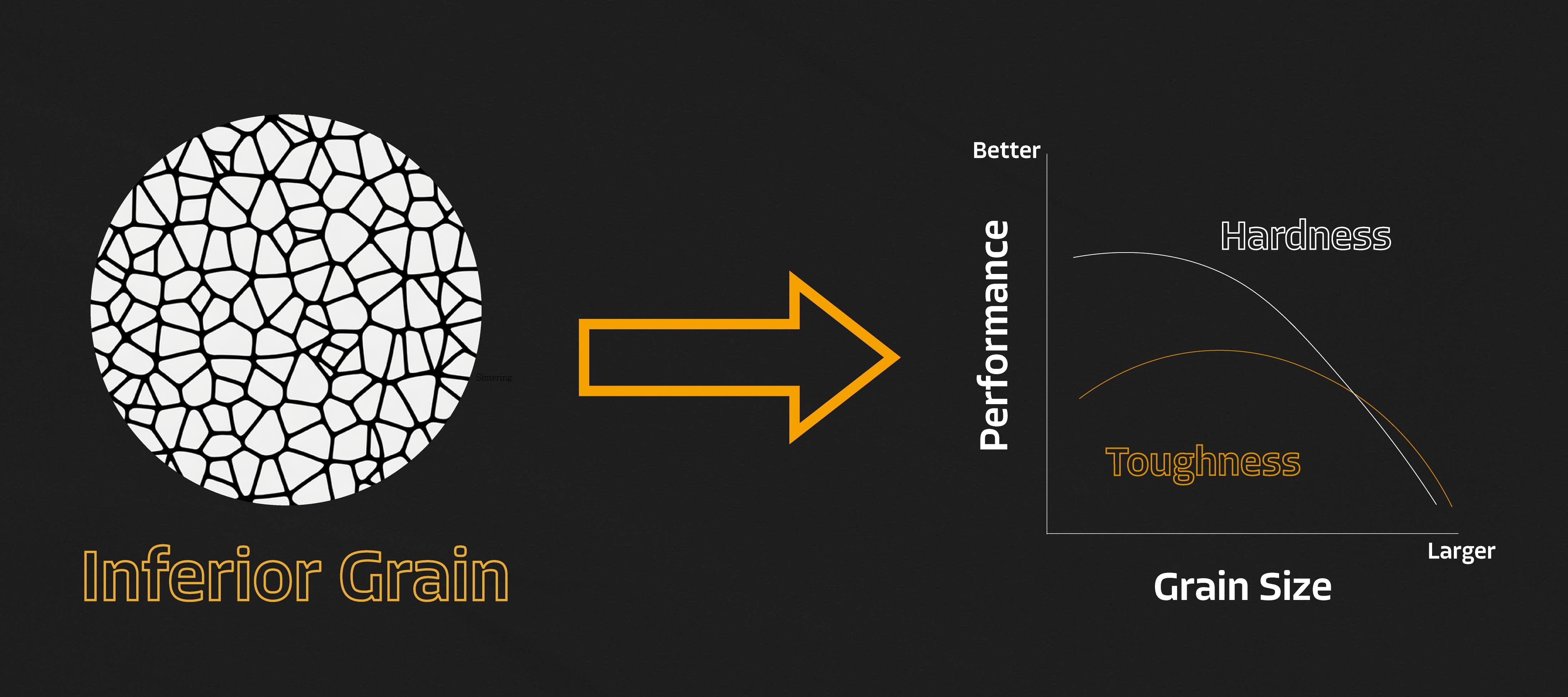When it comes to milling teeth, rotation rate is the foundation—and rightly so. A properly rotating tooth ensures even wear, better cutting angles, and longer tool life. But once you've achieved good rotation, the next critical factor that truly determines durability is:
The tungsten carbide tip.
 This is the part that makes direct contact with the road surface. It cuts, crushes, and absorbs every ounce of force from asphalt, concrete, or rock.
This is the part that makes direct contact with the road surface. It cuts, crushes, and absorbs every ounce of force from asphalt, concrete, or rock.
If your tip wears too fast, chips too easily, or fractures under pressure—rotation won’t save you.
That’s why tip performance becomes the deciding factor for durability—once rotation is achieved.
And it all comes down to how well the tungsten carbide is made and controlled.
Learn more about Milling Tooth Rotation
Table of Contents:
1. The Pain Point of Tooth Tips: Toughness vs. Hardness
2. Why Grain Size Is the Key to Hardness and Toughness
i. In a Perfect World: Finer = Better
ii. In the Real World: Balance Is Everything
iii. Without Control: Everything Falls Apart
3. What Did Everpads Do Differently?
4. The Result
I. The Pain Point of Tooth Tips: Toughness vs. Hardness
Here’s the classic problem everyone in the industry faces:
- The harder you make a tip, the more brittle it tends to become
- The tougher you make it, the faster it tends to wear out
It’s a constant trade-off.
You want:
- Hardness for longer wear and sharper cutting
- Toughness so it doesn’t crack under impact
But materials science tells us:
You can’t easily have both—unless the internal grain structure is precisely controlled.
II. Why Grain Size Is the Key to Hardness and Toughness
Before we talk about control, let’s understand what affects these two properties more than anything else:
In tungsten carbide, the crystal grain size is directly tied to how the material performs under stress and friction.
✅ In a Perfect World: Finer = Better
In an ideal, perfectly controlled setting:
- Smaller grains → more grain boundaries → less deformation → higher hardness
- And with ideal structural alignment, toughness can still be preserved
So in theory:
Finer grains = harder AND tougher.
That’s why the industry pushes toward ultra-fine grain sizes—even into sub-micron and nano levels.
But here’s the truth:
This only works if everything else is perfectly controlled—
and in real-world manufacturing, that level of control is almost impossible
🧪 In the Real World: Balance Is Everything
In real production environments, grain size control is never flawless.
So instead of chasing the smallest grain possible, smart manufacturers focus on:
Finding the optimal grain size that balances both hardness and toughness under practical, scalable conditions.
This is where advanced process control makes all the difference.
With:
- High-purity powder
- Narrow grain size distribution
- Precision-controlled sintering
…it’s possible to reach a sweet spot:
✔️ Small enough to achieve high hardness
✔️ Large and stable enough to resist cracking
Because in a real-world, imperfect but well-controlled system, grains that are too fine can actually weaken the structure— due to excessive grain boundaries, poor grain bonding, and increased internal stress concentration. The tip becomes brittle, and fractures under repeated impact.
That’s exactly what Everpads avoids by choosing a smartly balanced 20μm structure.
It’s not just about going smaller—it’s about going smarter.
⚠️ Without Control: Everything Falls Apart
Now imagine trying to use fine grains without that kind of process control:
- Uneven powder quality
- Random grain growth during sintering
- Weak grain boundaries and internal stress points
The outcome?
❌ Tips that crack too soon
❌ Tips that wear out too fast
❌ Or worse—both
Performance becomes inconsistent, unpredictable, and unreliable.
III. So What Did Everpads Do Differently?
We focused on what matters most:
Achieving the best possible balance between hardness and toughness—not in theory, but in real-world production.
 🔬 At Everpads, we don’t just use fine grains—we engineer them.
🔬 At Everpads, we don’t just use fine grains—we engineer them.We ensure:
- Powder uniformity → tight particle size control
- Stable microstructure → carefully controlled sintering
- Clean grain boundaries → fewer weak points, longer life
At 20μm, we’ve reached a level of internal consistency that:
✔️ Maintains high hardness
✔️ Withstands extreme impact
✔️ Outlasts other tips that go fine without control
IV. The Result?
Milling teeth that cut deeper, last longer, and resist cracking under extreme stress.
Because at Everpads, we understand:
It’s not just how small the grain is—
It’s how well it’s controlled.
Finally, you can see how Everpads delivers these requirements through our blog: Everpads Technology: The Most Efficient Asphalt-Cutting Solution on the Market - Gen-E Milling Teeth.